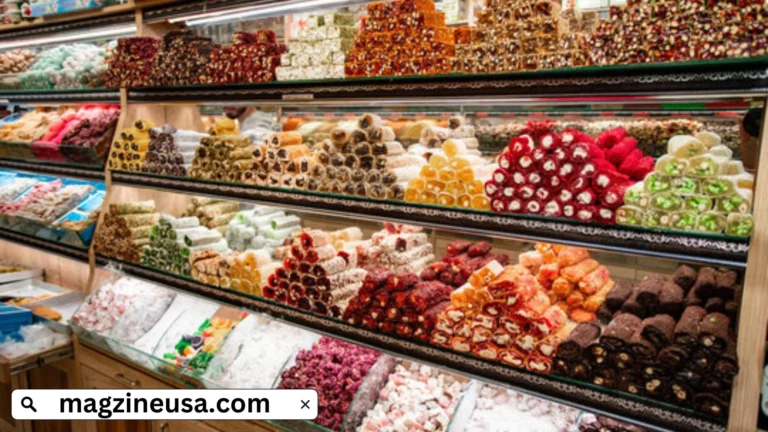Introduction
In the rich tapestry of Turkish cuisine, desserts hold a special place, blending centuries-old traditions with a tantalizing array of flavors. Among these delights stands “sukıtır,” a dessert that embodies both the simplicity and complexity that define Turkish sweets. This article delves into the origins, preparation, and cultural significance of sukıtır, offering a flavorful exploration of this lesser-known treat.
Origins and History
Sukıtır traces its roots to the culinary heritage of Anatolia, where Turkish cuisine evolved through a fusion of Central Asian, Middle Eastern, and Mediterranean influences. The name “sukıtır” itself reflects its preparation method, which involves soaking or drenching, typically in syrup or a sweet liquid. This process not only enhances the flavor but also preserves the dessert, making it suitable for both everyday enjoyment and festive occasions.
Historically, sukıtır has been a staple in Turkish homes, especially during religious holidays such as Ramadan and Eid. Its presence on dessert trays alongside classics like baklava and künefe speaks to its cultural significance and the artistry involved in its creation.
Ingredients and Preparation
Central to sukıtır is its ingredients, which are simple yet carefully chosen to create a harmonious blend of textures and tastes. The base often consists of thin layers of pastry or dough, which are meticulously layered and then baked to achieve a delicate crispness. Once baked to perfection, these layers are generously soaked in a fragrant syrup infused with ingredients such as sugar, and water, and sometimes flavored with rose water or citrus zest.
The process of preparing sukıtır requires patience and skill, as each layer must be precisely layered and evenly soaked to achieve the desired consistency—neither too soggy nor too dry. This attention to detail reflects the artisanal craftsmanship inherent in Turkish dessert-making, where mastery is passed down through generations.
Flavors and Variations
While the classic sukıtır recipe remains a favorite, regional variations add a delightful twist to this traditional dessert. In some parts of Turkey, for instance, sukıtır may feature nuts such as pistachios or walnuts between its layers, adding a satisfying crunch and depth of flavor. Alternatively, creative chefs might experiment with different syrups or infusions, adapting sukıtır to suit modern palates while honoring its cultural heritage.
Seasonal influences also play a role in shaping sukıtır’s flavors, with variations appearing during different times of the year. In summer, for example, a lighter, fruit-infused syrup might complement the dessert, while winter months may call for richer, spiced syrups that evoke warmth and comfort.
Cultural Significance and Traditions
Beyond its culinary appeal, sukıtır holds cultural significance in Turkish society, symbolizing generosity and hospitality. It is often served to guests as a gesture of welcome, accompanied by strong Turkish coffee or fragrant tea—a tradition that dates back centuries. The communal act of sharing suiter fosters connections among friends and family, reinforcing bonds and celebrating moments of joy and togetherness.
During religious and social gatherings, sukıtır takes center stage on dessert tables, offering a sweet conclusion to meals shared with loved ones. Its presence underscores the importance of tradition in Turkish culture, where food serves not only to nourish but also to connect people across generations.
Conclusion
In conclusion, sukıtır emerges as a testament to the artistry and cultural richness of Turkish desserts. Its delicate layers, infused with syrup and tradition, offer a sensory journey that captivates both palate and heart. Whether enjoyed in a bustling market in Istanbul or lovingly prepared at home, suiter invites all who taste it to savor not just its flavors, but also the history and heritage it embodies. As Turkish cuisine continues to enchant food lovers worldwide, sukıtır stands as a timeless delight—a reminder of the enduring pleasures found in every bite.
FAQ’s
1. What is sukıtır?
Sukıtır is a traditional Turkish dessert consisting of thin layers of pastry or dough that are soaked in syrup. It is known for its delicate texture and sweet flavor.
2. How is sukıtır prepared?
Sukıtır is prepared by layering thin sheets of pastry or dough, baking them until golden and crisp, and then soaking them in a syrup made of sugar, water, and often flavored with rose water or citrus zest. The dessert requires careful attention to ensure the layers are evenly soaked without becoming soggy.
3. What are the key ingredients in sukıtır?
The main ingredients in sukıtır include pastry or dough sheets, sugar, water, and flavorings such as rose water or citrus zest. Some variations may include nuts like pistachios or walnuts between the layers.
4. Is sukıtır served warm or cold?
Sukıtır is typically served at room temperature or slightly chilled. The syrup-soaked layers can be enjoyed with a cup of Turkish tea or coffee.
5. What occasions are sukıtır served for?
Sukıtır is often enjoyed during special occasions and holidays in Turkey, such as Ramadan and Eid. It is also served as a dessert to guests as a gesture of hospitality and celebration.
Read more: 4 Ways to Remove “Sludge” from Health Care Processes


